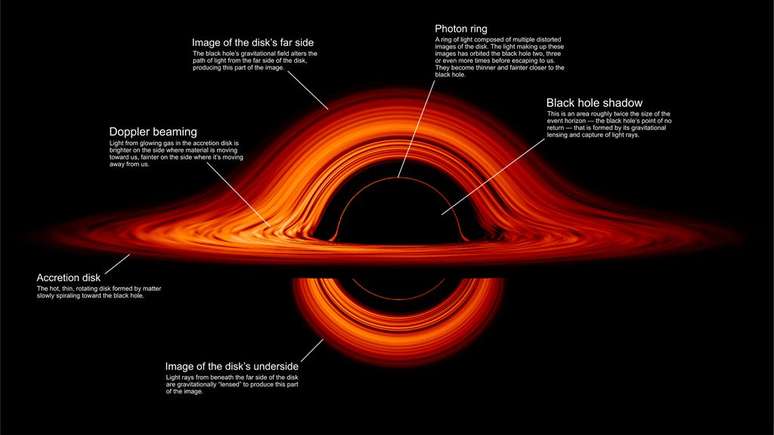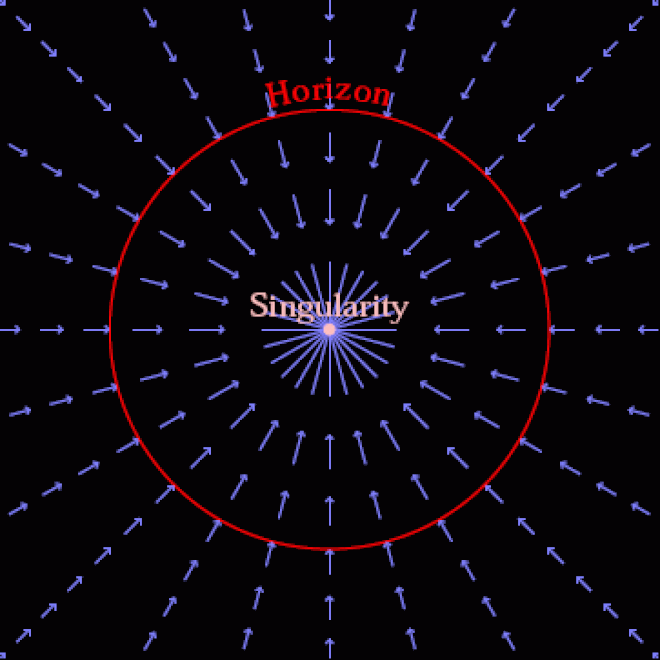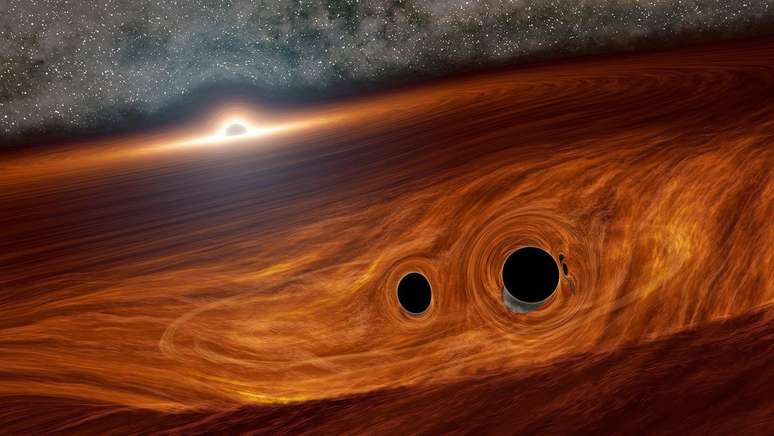Conventional physics doesn’t explain the singularity of black holes, but what if they were Grastars?
Black holes are increasingly understood, but it is still difficult to say what happens inside them, since one of the main hypotheses violates the laws of physics. Now, a new study published by Brazilians suggests that black holes are, in fact, something called uvastars.
Black holes are areas of space-time where matter has become so dense that gravitational power becomes the most relentless in the universe. If you go beyond the event horizon of a black hole, you will need a speed greater than the speed of light to escape.
Because of this feature, scientists know that not even photons of light – the fastest beings in the entire cosmos – can escape, which is why black holes are completely invisible. Since light is not reflected after hitting the cosmic titan, we cannot view any image of the object.
Without seeing what’s behind the event horizon, it’s impossible to understand what a black hole looks like from the inside. It’s as if we wanted to know what the surface of a planet is like without being able to see even its outermost atmosphere.

According to the theories predicted by general relativity of Albert Einstein, the interior of a black hole must be something known as a singularity, a zero-dimensional, infinitely dense point. However, “infinity” is a concept not recognized by physics, nor by the mathematics that describes it, which makes it the singularity is a controversial topic.
The fact that there is an “infinity” in the calculations indicates that the models currently used are incomplete, or that black holes are not exactly what is imagined. This is where new attempts to explain black holes play their vital role in the search for all possible solutions, however strange they may seem.
One such solution is the uvastar, a type of hypothetical object proposed in 2001 to replace black holes with particular stars. The interesting thing about this idea is that it incorporates the principles of quantum mechanics, something on which the black hole theory in general relativity is based, which not only ignores the quantum world, but is incompatible with it.
If in the currently accepted models massive stars explode and, due to their masses, collapse into black holes, in the Gravitational Hypothesis the result of the collapse is a condensed gravitational vacuum star (hence the name, which derives from Gravitational Vacuum Star) . In it a phase transition occurs which limits the collapse of the star before the singularity occurs.
The 2001 proposal was submitted to the scientific journal Physical review letters, but it was not published and, in a sense, fell into oblivion. Now, an article published in Physical review D by a Brazilian team carried out a more detailed analysis of the Grastar mathematical model.
To investigate whether uvastars match observations of black holes, the authors analyzed what the interaction between particles with these hypothetical objects would be like. They also looked at how the mass of hot matter around supermassive black holes (accretion disks) would behave.
The result was a striking similarity between the properties predicted for Grastars and actual observations of what scientists call black holes, with the crucial difference that no singularity exists.

Furthermore, the shadow of black holes caused by the event horizon (that region from which light does not escape) would actually be caused by “a slightly different phenomenon called ‘gravitational redshift,’ which causes light to leak energy when it moves through a region with a strong gravitational field,” said João Luiz Rosa, lead author of the study.
He adds that “in fact, when the light emitted from the regions close to these alternative objects reaches our telescopes, much of its energy would have been lost in the gravitational field, causing the appearance of this shadow.”
This shows that uvastar research could prove promising, although there is still much work to be done. “To experimentally test our results, we rely on the next generation of observational experiments in the field of gravitational physics,” Rosa said. Until then, “traditional” black holes will remain the most accepted models by the scientific community.
Source: Physical review D, Space.com
Trends on Canaltech:
- 🚨 UNMISSABLE | Buy Galaxy S23 512 GB on super offer with coupon
- Films arriving in theaters in June 2024
- It is FALSE that the Earth will be “much further” from the Sun! Understand what aphelion is
- The magnetic anomaly affecting Brazil is growing and moving
- VinFast VF 3 | Electric Jipinho is a sales success on Shopee
- The 45 most anticipated films of 2024
Source: Terra
Rose James is a Gossipify movie and series reviewer known for her in-depth analysis and unique perspective on the latest releases. With a background in film studies, she provides engaging and informative reviews, and keeps readers up to date with industry trends and emerging talents.







